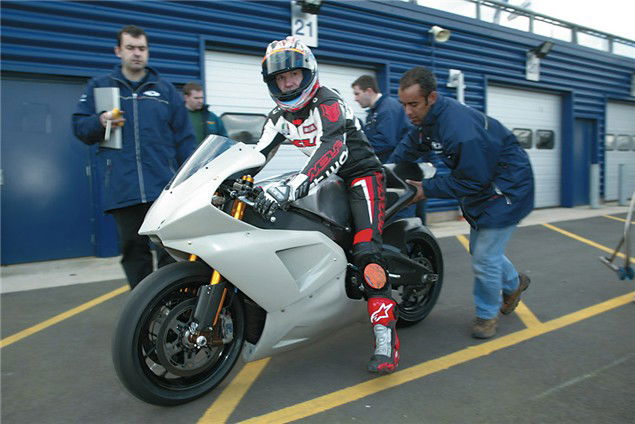First Ride: Harris WCM GP review
British MotoGP rookie Chris Burns rides a Grand Prix bike built around the bones of a Yamaha R1 in less than 14 weeks by a British team. Niall Mackenzie tests the impressive Harris WCM GP bike.


On the grid of the first MotoGP of 2003 season a Brit-built bike with Chris Burns, a British rider in the saddle will line up alongside the rest of the world's biking heavyweights. In Suzuka on April 6 Honda, Suzuki, Kawasaki, Yamaha, Ducati, Aprilia will be joined by Harris WCM from Hertford, Herts.
Let's be under no illusions here though, Chris Burns isn't going to storm through the field and win the first round like David Essex in Silver Dream Racer. But to be there at all is a hell of an achievement and a major plus for British racing. And considering the lack of development time involved, the Harris WCM machine is very impressive.
After a few laps the closest thing I can compare it to is a superbike, and a very well developed superbike at that. Also, considering when I rode it at the official IRTA GP test at Catalunya it was only the second time it had turned a wheel that's even more impressive. I've been doing a lot of development testing with the Crescent Suzuki BSB team this year and the WCM is as good as that, with even more power.
The bottom end and mid-range torque feels much stronger than the GSX-R, although this could be to do with the WCM machine weighing 12kg less than the BSB bike at a very bantam weight 150kgs.
Handling is hard to fault and hits the spot every time, which isn't surprising because the chassis is basically the same as a GP500. Harris ran a privateer 500cc GP bike in the nineties with their own chassis and the WCM bike has virtually the same geometry and adjustability built into it. Through the corners the WCM bike could match most of the other GP guys' speed but on the exit it loses out - once the GP bikes were upright and onto a part of the tyre that wouldn't spin they would clear off thanks to their extra horsepower.
Harris WCM reckons the bike has around 190bhp at the rear wheel, which isn't bad for a superbike, but the MotoGP big guns have over 220bhp at their disposal. A bit more development should close this gap and it's still early days for the motor. Top rpm is just short of 13,000rpm but Harris is planning to up this to 13,500rpm in the next generation engine, with a wider spread of power. This will either be done using a Yamaha style five valve per-cylinder head or a more conventional four valve design. Harris, and it's engine development team of Dave Hagen, a very well respected British tuner, and AER, an engine research company who developed the MG Le Mans engine of 2002, are still experimenting with the two configurations.
The lack of power was most noticeable on the straights where the WCM bike recorded nearly 190mph. I thought I was going fast until Troy Bayliss or Alex Barros came past about 20mph faster. Which kind of lets you know that while the bike is good there's still a fair amount of work to do to compete with the GP guys.
Saying that; the handling was good and so was the front end feeling, although there was a slight understeer in some of the faster corners, and the carbon brakes weren't really getting up to temperature, although this is easily cured with brake shrouds or smaller discs. The handling glitches are just a case of fine-tuning the suspension and chassis and shouldn't cause bother for a team with as much experience in it's ranks as Harris WCM.

